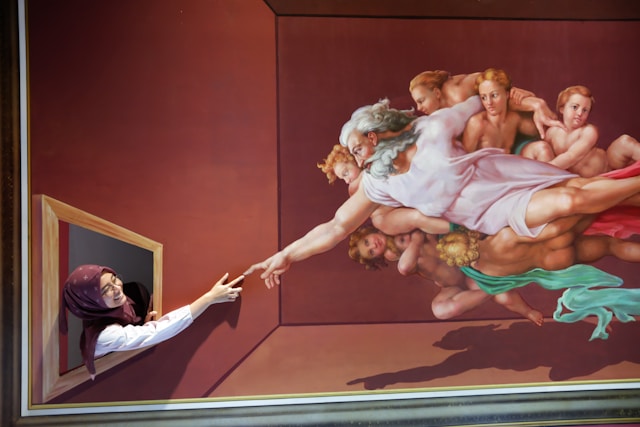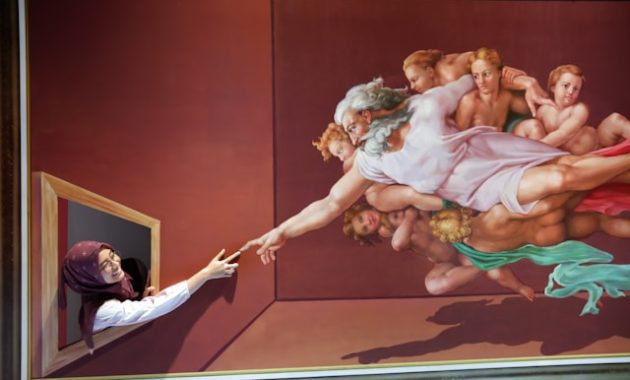
As Indonesia’s bustling capital, Jakarta is a melting pot of history, culture, and modernity. A city that pulses with life, Jakarta boasts a rich cultural tapestry woven from centuries of influences. For travelers eager to immerse themselves in the city’s heritage, Jakarta offers a wide range of fascinating sites—from ancient temples and historical museums to vibrant cultural districts. In this guide, we explore some of the most captivating museums, temples, and heritage sites that Jakarta has to offer.
Exploring Jakarta’s Historical Museums
National Museum of Indonesia (Museum Nasional)
Known as the “Elephant Building” due to its bronze elephant statue, the National Museum of Indonesia is a treasure trove of artifacts that showcase Indonesia’s rich history. Located on Merdeka Square, this museum offers visitors a comprehensive journey through the archipelago’s past, housing collections that span prehistory, anthropology, ethnography, and archaeology. Notable artifacts include ancient Javanese statues, tribal artifacts, and beautifully crafted ceramics.
Jakarta History Museum (Museum Sejarah Jakarta)
The Jakarta History Museum, also called the Fatahillah Museum, is located in the historic Kota Tua (Old Town) district. Once the administrative center during the Dutch colonial period, this building showcases Jakarta’s colonial history with exhibits of maps, weaponry, and traditional furniture. The museum provides an immersive experience with its well-preserved interiors and offers insight into Jakarta’s transformation from a port city into a sprawling metropolis.
Museum MACAN (Modern and Contemporary Art in Nusantara)
For art enthusiasts, Museum MACAN is a must-visit. As Indonesia’s first museum dedicated to modern and contemporary art, Museum MACAN hosts a diverse collection of local and international artworks. This museum highlights Indonesia’s contemporary art scene with rotating exhibitions that include paintings, sculptures, installations, and multimedia projects by notable Indonesian and international artists.
Textile Museum (Museum Tekstil)
Housed in a beautiful 19th-century mansion, the Textile Museum in Jakarta is dedicated to preserving and showcasing Indonesia’s traditional textiles. Visitors can explore a vast collection of batik, ikat, and songket fabrics, each reflecting different regions and cultural practices. The museum also offers batik-making workshops, allowing visitors to create their own designs using traditional techniques.
Jakarta’s Sacred Temples and Religious Sites
Istiqlal Mosque
The Istiqlal Mosque is Southeast Asia’s largest mosque and an architectural masterpiece. Built to commemorate Indonesian independence, Istiqlal is a striking structure that combines elements of modernism with Islamic principles. Located near the Merdeka Square, the mosque’s massive prayer hall can accommodate up to 200,000 worshippers. The mosque is also open to non-Muslim visitors, who can enjoy a guided tour to learn about its design, history, and religious significance.
Jakarta Cathedral
Across from Istiqlal Mosque stands the Jakarta Cathedral, a stunning neo-Gothic structure that has been an iconic place of worship since its construction in 1901. Officially known as the Cathedral of the Assumption of the Blessed Virgin Mary, this cathedral is not only a religious site but also a symbol of religious tolerance in Jakarta. Visitors can explore its intricate stained glass windows, grand altar, and serene ambiance, as well as the museum on the upper floor, which houses religious artifacts and historical relics.
Vihara Dharma Bhakti Temple
One of Jakarta’s oldest temples, the Vihara Dharma Bhakti Temple in Glodok (Chinatown) dates back to the 17th century. Originally established as a center for Buddhist and Taoist worship, this temple remains an important spiritual hub for the city’s Chinese-Indonesian community. Visitors are often mesmerized by its ornate architecture, vibrant incense offerings, and the tranquil atmosphere that contrasts with the bustling streets of Glodok. The temple becomes particularly lively during the Chinese New Year celebrations.
Jin De Yuan Temple (Vihara Dharma Sakti)
Located within Chinatown, Jin De Yuan Temple is another significant religious site that reflects the long-standing presence of the Chinese community in Jakarta. Built in the early 18th century, this Taoist temple is dedicated to the deity Guanyin and features traditional Chinese architectural elements, including red lanterns, intricate wood carvings, and dragon motifs. Jin De Yuan provides a fascinating glimpse into the city’s Chinese heritage and cultural practices.
Heritage Sites and Historical Landmarks
Kota Tua (Old Town)

Jakarta’s Kota Tua, also known as the Old Town or Old Batavia, is a district where visitors can step back in time and experience the remnants of Dutch colonial architecture. Stroll through the cobbled streets of this heritage district, where preserved colonial buildings house museums, cafes, and shops. The Fatahillah Square is the heart of Kota Tua, offering a vibrant atmosphere with street performers, artists, and colorful bicycles available for rent.
Sunda Kelapa Harbor
Sunda Kelapa Harbor is Jakarta’s oldest port, dating back to the 13th century when it was a thriving trade center. Today, this historical port is lined with traditional phinisi schooners that still operate as cargo vessels. A visit to Sunda Kelapa offers a unique opportunity to witness these colorful boats up close and understand the port’s importance in Indonesia’s maritime history. For an immersive experience, travelers can take a boat tour to explore the harbor and observe the daily activities of local fishermen.
Taman Mini Indonesia Indah (Beautiful Indonesia Miniature Park)
For a unique overview of Indonesia’s diverse cultures, Taman Mini Indonesia Indah (TMII) is an ideal destination. Spread over 250 acres, TMII features pavilions representing each of Indonesia’s provinces, complete with traditional houses, costumes, and artifacts. In addition to its cultural exhibits, TMII also houses museums, gardens, and a lake with miniature islands, making it a popular destination for families and visitors interested in understanding the breadth of Indonesian culture in one location.
Merdeka Square and Monas (National Monument)
A prominent symbol of Jakarta and Indonesia’s independence, the National Monument (Monas) towers 132 meters over Merdeka Square. This iconic landmark represents Indonesia’s struggle for freedom, with a flame-shaped structure at the top symbolizing the spirit of independence. Visitors can take an elevator to the top for panoramic views of the city. The base of the monument also houses a museum that narrates Indonesia’s journey to independence through a series of exhibits and dioramas.
Cultural Districts and Experiences
Glodok: Jakarta’s Chinatown
The Glodok district is Jakarta’s Chinatown and a vibrant area where visitors can experience the city’s Chinese heritage. Known for its bustling markets, traditional shops, and food stalls, Glodok offers an array of experiences, from sampling Chinese-Indonesian delicacies to shopping for Chinese herbs, medicines, and artifacts. In addition to its temples, such as the Jin De Yuan Temple, the area is home to antique shops and street vendors, making it a lively destination for cultural exploration.
Menteng: Dutch Colonial Residences
Located in central Jakarta, the Menteng district is famous for its Dutch colonial-style mansions and well-planned streets lined with trees. Originally developed as a residential area for Dutch officials, Menteng’s historic architecture and elegant homes provide a glimpse into the colonial-era lifestyle. The area is also home to several art galleries, cafes, and the Proclamation Monument, which commemorates Indonesia’s independence declaration.
Conclusion
Jakarta is a city where tradition and modernity blend seamlessly, and its rich cultural heritage is evident in every corner. From historical museums and sacred temples to vibrant heritage districts, Jakarta offers visitors an unparalleled cultural journey. Exploring these museums, temples, and historical sites not only enriches one’s understanding of Jakarta but also provides a deeper appreciation for Indonesia’s diverse cultural legacy.